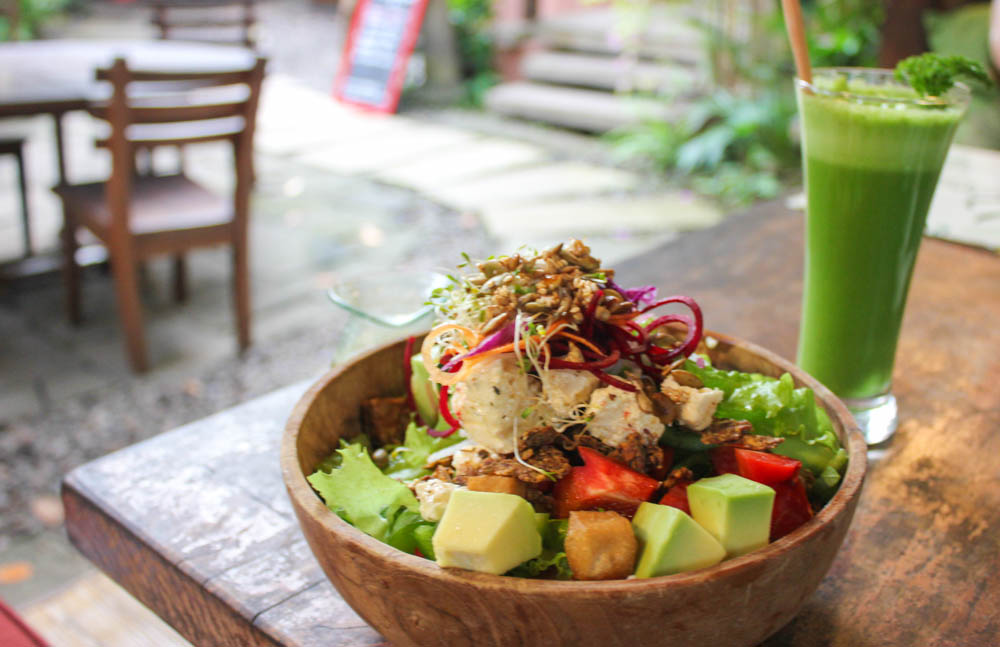If you are one of the many people who have recently started yoga, you will probably have read or heard a lot about vegetarianism. A lot of yoga teachers and practitioners will often take up a vegetarian diet once they get serious about their yoga practice – you might be wondering what that’s all about. The answer lies in the historic roots of yoga.
There are two main historical reasons for this connection, and both of them lie in the early texts which influenced how yoga was established and interpreted. How these texts are interpreted depends on the person you ask, and the school of yoga you ascribe to. But these are the most commonly cited reasons for the yoga-vegetarian connection.
- Sattva – roughly translated to mean ‘cleanliness’. The notion of sattva can be found in one of the most influential early Hindu texts, the Bhagavad Gita. In this text, a vegetarian diet is seen to “promote vitality, health, pleasure, strength, and long life.” Sattvic foods included fruits, vegetables and grains and were said to be the best form of cleanliness within the diet. The other categories of foods in the text are ‘rajasic’ foods which include alcohol, meat and fish and finally ‘tamasic’ foods which include overcooked or stale foods. This categorisation became part of how diet was interpreted from the initial text and for thousands of years thereafter.
- Ahimsa – translated as ‘non-harm’. This is one of the cornerstones of yogic philosophy and can be found in the historic text of the ‘Yoga Sutras of Patanjali’. In this text, ahimsa is cited as one of the eight limbs of yoga – the social and moral guidelines for yogis to live by. Ahimsa has been interpreted by many to mean non-harm of animals, as well as the non-harm of any other living thing, although there is a lot of debate over this in the yoga community. Some would argue that certain people would be harming their own body by adapting a vegetarian diet, and that this would fall under the ahimsa guideline. The debate continues. One of the main ways to interpret ahimsa is loving-kindness and non-judgement, so whatever you believe about your diet, this guideline promotes an open and non-judgement approach, regardless of which side of the fence you sit on.
Personally, I think each person needs to look after their own body in a way that makes sense to them. I was a vegetarian from when I was 8 years old until I was 21 – then I ate meat for health reasons for 4 years, and then went back to a vegetarian diet at 25 but included eggs and fish in my diet to help my own body stay healthy. At the core of it, yoga is a way to become more connected to yourself – to give yourself a healthy body and mind and to become kinder to yourself in all areas of your life. Within that understanding, each person will do what they feel is best for them- for some people vegetarianism just ‘felt right’ and for others it didn’t. If you are becoming more and more serious about your yoga practice, do some research into the roots of yoga, and check in with how you feel about it – then listen to your body and find a balance that works for you.



